It all started as a little experiment. A couple months after Motorola, Verizon, and Google launched the first Motorola Droid as the exclusive launch device of Android 2.0 Eclair, Google introduced the Nexus One in January of 2012. Manufactured by HTC, the phone would not only act as the first device to run Android 2.1, but it would do so while attempting to change the way consumers made their smartphone purchases. Rather than heading to a carrier store and signing away the next two years of mobile independence to purchase the handset at a subsidized pricing, Google would offer the phone directly at full price and give buyers the freedom to choose their own service provider. But the experiment failed and Google soon dropped out of the device sales game.
Nexus One
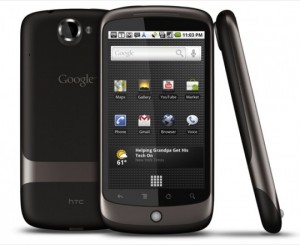
Back then the Nexus One was top of the line hardware. It featured a 1GHz Snapdragon processor, 3.7-inch 480×800 AMOLED display, and a 5MP camera. Today these specs wouldn’t even suit most mid-range devices, but the N1 will forever stand as one of the best examples of an Android handset ever produced. It also set the precedent for future Nexus releases. Each handset would usher in a new version of Android, and Google promised that all manufacturers would have a chance to earn themselves a Nexus device in their lineup.
But the Nexus One was not commercially successful, despite Google ditching its initial strategy and eventually launching the handset via the normal carrier model. Later in 2010 it became the first handset to be treated to Android 2.2 Froyo. Hardcore fans and developers lived and died by the Nexus One, its trackball becoming an Android icon, but soon better hardware was making its way to market and the N1 slowly fell from popularity.
Nexus S
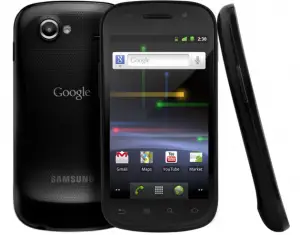
By December 2010 Google was ready to launch the next iteration of Android, Gingerbread, and a new Nexus device was in order. This time Samsung was tasked with developing the phone after the tremendous global popularity of their Galaxy S phone. Largely based on the same hardware, the Samsung Nexus S featured a larger display than its predecessor at 4.0 inches, this time utilizing Super AMOLED technology to provide brilliant image quality despite featuring the same screen resolution as the Nexus One. The phone still ran on a 1GHz processor, but it was built around Samsung’s Hummingbird platform. New features included a front-facing camera and NFC support, both slightly ahead of their time but vital to shaping the future of Google’s mobile OS.
The Nexus S launched with a more traditional sales model and soon became a hit among Android die-hards, as with Nexus One before it. The phone became the standard for Android 2.3 development, but once again more powerful hardware and new software advancements began to make the handset feel dated in some aspects. Cleaning up the Android code to offer better performance meant that the Nexus S would not soon be relegated to obsolescence, but for the biggest Android update to date Google needed something that offered a bit more.
Galaxy Nexus
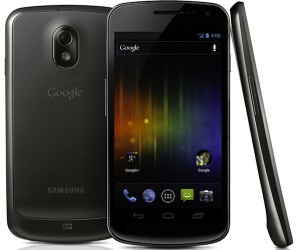
After branching off of the original Android tree to develop Honeycomb, a tablet-oriented version of the OS that did not feature its own Nexus device, Google decided it was time to bring things back together. They did so with the launch of Android 4.0 Ice Cream Sandwich and another Samsung-made phone, the Galaxy Nexus in December 2011. This time based around the Galaxy S II, the Galaxy Nexus was the first in the line to feature multi-core processing, an HD display, and LTE connectivity.
The hardware provided the perfect platform for the sweeping changes the Android Team made to Ice Cream Sandwich’s user interface and functionality, and the device still stands as the development platform for the newly announced Jelly Bean iteration of the operating system. Android 4.1 was not without its own launch device, however.
Nexus 7

Rumors of a Nexus tablet can be traced all the way back to the Nexus One and Nexus S, when Apple’s iPad was just starting to take hold of the world. With the launch of Android 4.1, the rumors finally became a reality. Designed by ASUS and based around NVIDIA’s Tegra 3 platform, the 7-inch slate features quad-core processing and all the other marks of a modern tablet deemed worthy of Google developer status. This of course includes features like NFC and wireless connectivity ranging from WiFi to Bluetooth.
But more so than it’s hardware or new software, the Nexus 7 will be known as Google’s first big push back into device sales since the Nexus One. While the Galaxy Nexus recently became available for purchase directly from Google, the Nexus 7 adopts an aggressive pricing strategy in hopes to undercut the competition and bring the tablet to as many users as possible. But the Nexus 7 would not be the only new device Google would offer for sale, nor would it be the most unique form factor.
Nexus Q
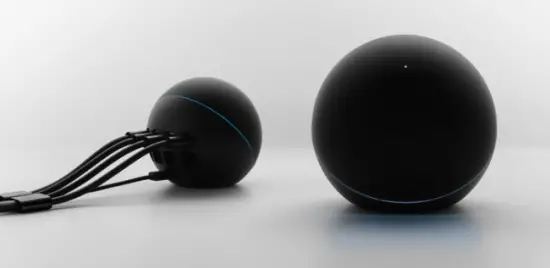
Up to this point, all Nexus devices took on a familiar form. Even the Nexus 7 didn’t buck the trend, despite its larger size. The Nexus Q isn’t so easily categorized, a futuristic sphere designed to act as a social media streaming hub. Controlled by Android devices, the Nexus Q can connect to a TV or set of speakers to play back music, video, and web content. It is built up using some of the same hardware found in the Galaxy Nexus and runs Android, but Google isn’t planning to sell the device as some sort of Android PC. The Nexus Q is more about the experience of interacting with others, using the cloud to store and share music libraries or movies.
The Future of Nexus
So what’s next for the Nexus line? Perhaps a more obvious choice than the Nexus Q may have been a Nexus device running Google TV, the internet TV platform Google had little to say about during the I/O show that saw the unveiling of Android Jelly Bean, the Nexus 7, and Nexus Q. It makes sense for Google to feature a Nexus product for each of their Android-based platforms, from tablet to television. And what about future Nexus smartphones? We’d guess a quad-core processor and HD display is almost a given. But can we expect the release pattern to remain the same? And if so, who is on tap for the next edition?
While it can’t be said for certain, the launch of two new Nexus devices simultaneously suggests Google may be shifting from their one-device-a-year flagship release strategy. The timing of Jelly Bean flips the script a bit, and we may have to wait for a new Android version to see the next Nexus. However, recent whisperings suggest that Google may launch an entire lineup of Nexus phones from various manufacturers later in the year and sell them all directly via their Google Play Store. One thing is for sure, the Nexus has been the pulse of Android, both in the realms of software and hardware, since the line was first introduced in January of 2010. Each new device sets a precedent for all those to follow, offering an example of how to beautifully marry advancing software functionality with powerful hardware design.




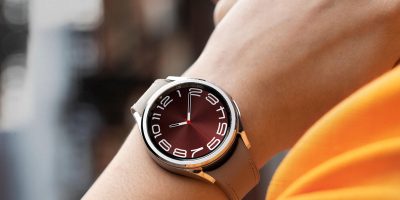






I know it doesn’t have “Nexus” in the title, but you have to include the G1. It was announced and pitched by Google and was the first “Google phone” out there.
Also don’t forget the Xoom, it is a GED and it is a Nexus in everything buy name
But, it’s not.
“… in everything but name” is an accurate representation.
Either it’s sold as a Nexus, or it’s not. In this case, It’s not.
The products here are Nexus only devices. The G1 was not, though you are right, i remember the commercials back in 2008 about the Google phone, and all the focus they put on streetview.
Ok, but it is fair to say that the G1 is the father of all nexus devices.
Father? umm… G1 was the first retail Android phone. I’m not sure about being father to Nexus. I think Cousin would be more like it. The Nexus line was designed for Developers to test their software on. It is now developing into a hybrid: for dev’s AND regular folk.
Sorry, I disagree. I believe father is the correct term. The original droid might be considered a cousin. And the Nexus line, while always being developer devices, were never solely for developer use. But I respect your opinion. :)
On a percentage basis, how much percent of the Nexus One owners do you think were developers?
Also, the Droid 1 was a slider, just like the G1, and the Nexus1 was candybar. So there was definitely a difference
Never said there weren’t differences. Fathers and sons have differences all the time xD
True
He’s right. Google hadn’t thought of the “Nexus” name at the time, G1 was what they were using. Just like there is also a G2. They only later started that with the Nexus One. Most people just don’t remember back that far… but as a G1 owner from the first day Android was available, it was the “Nexus” of it’s time.
I completely agree. It may suck on anything later than Donut, but it was probably my favorite purchase. (I already have a GS2, but bought a G1 to play around with).
seriously… i love the phandroid website but this dude on the video needs a lot of knowledge on Nexus devices………….. don’t make a video just to make a video…. do it to represent your site and show your knowledge and give the audience an idea of what you are showing them to make your video a lot more interesting and enjoyable ……………. still love the site but lets make it happen…
Yeah
Absolutely. Not knowing the screen size of the Galaxy Nexus seemed to be embarrassing if you ask me. That’s only one of the mistakes. Nice article, though.
yeah made me laugh when he said about the 5th processor for graphics?!?! nevermind screen size thing.poor guy.
#Corrections
Nexus One was released in 2010.
I read 2012 and thought maybe time moved reall fast…
”
Google introduced the Nexus One in January of 2012″ That would make the Nexus One about 6 months old.
And look how far we’ve come in 6 months! 2.1, 2.2, 2.3, 3.0, 4.0, 4.1 lol
Agreed. The G1 needs to be here. Nexus would not have evolved without it.
“Google introduced the Nexus One in January of 2012”, sorry to point out the wrong date there.
I wish the Galaxy Nexus had stayed in line with the naming convention since everything before and after has done so (1, S, 7, Q). I’m sure we have Samsung to blame for that.
I like the one character naming convention as well, and I cringed when I heard “Galaxy Nexus”… But I think Google is at the mercy of the carriers here. Remember the million variations by carrier to the Galaxy S?
But since they might be selling these new Nexii from Google Play Store, I think they will keep the convention–very similar to the way Xperia phones are named.
I personally still want a “Nexus Prime” though…
wow this guy knows nothing ab phones can i have his job ??? and wheres the G1??????
And you say that he knows nothing?! Ha! Ha! :’D
The G1 wasn’t a Nexus branded device…
Good luck to get his job.
That only shows your ignorance as well. The G1 is a Nexus. It was the very first phone, before the “Nexus” brand even came about. Google supported it and treated it like a Nexus device. I bought one the first day it was available. Most people just didn’t know what Android was at the time, at least not until 2.2/2.3. The G1 had Android 1.0-1.5.
Ha! Ha! Ha! :’D oh please stop…
So it was a Nexus branded device “before the Nexus brand even came about?”
Logical.
When the Xoom was released, the Nexus brand existed, and Google’s supporting it the same way they’ve supported the G1, but they are not Nexus branded devices.
This article is about Nexus branded devices.
I think you’re misunderstanding the concept of “brand”. If the device was never officially announced or called a Nexus… then it’s not a Nexus no matter how hard you want it to be.
You might as well say that the G1 was also the first Nexus Android Tablet. It was a Nexus Android Tablet before Nexus Android Tablets existed. Just a small Nexus Tablet with a 3.7-inch screen, cellular connectivity, and complete lack of the Nexus branding convention.
Why is this such a big deal? There is no “Nexus” in the Xoom’s name, ergo, it is not a Nexus. And Google decides what’s a Nexus, and what isn’t. Simple as that.
Maybe you can have his job… unfortunately he = me and I’m the one that does the hiring ;)
Rob.. is the man! A sentimental guy like myself, who still love old tech..! I’m glad he brought a Nexus One to I/O…
Use it with pride, Rob…
I pre ordered my Google Nexus 7 today and I can’t wait to enjoy it. I also heard they hare making the Google Nexus 10 now, no release date, but I would imagine 2-3 months.
The ADP1, which was essentially a pre-rooted G1 should get am honorable mention, it wasn’t technically a Nexus device but was the precursor to the Nexus One.
the galaxy nexus was based on the sgs2? uhh did i miss something? the gnexus has a completely different chipset. i guess you could say the black front, rounded corners and back panel are styled from the sgs2 tho…
The Gnex was like a galaxy s2.5, but still in a class of it’s own.
oh yea, i love mine. working on getting MMS working in jellybean and ill be happy as can be :)
The only complaint i have about mine, is the fugly grey color casing.
and the lack of gorilla glass…
Oh ya, that’s a big one too…..They say it’s cause of the curved display, so i will not be buying curved display again!
Lack of gorilla glass is irrelevant. It’s just marketing. Other screens are just as strong except they don’t have fanboys who can remember the brand name.
“The timing of Jelly Bean flips the script a bit”
How, Google said 6 months between updates.
They said they’d eventually cut down major updates to a bi-yearly/semiyearly schedule and that’s what they’re doing; once every six months, 2 updates a year. That’s really not “flipping the script.” It should be making it easier on OEM’s to keep their shiz updated but unfortunately, that is something of a dream at the moment. “/
Notice how Google stopped using HTC after the Nexus One?
I think with the One series, HTC has a legitimate shot at one of the new Nexus devices to be released this fall.
Still hoping they release a few Nexus phones this year. If Google wants to take back some control from the carriers, why not?
Thinking about getting the Galaxy Nexus, is the processor future proof enough to get updates for a couple of years or would it be better to wait for the next Nexus?
I don’t think it will be the processor that has issues for a while unless augmented reality becomes big, in which case a quad core processor would probably be required for it to be smooth. Anyway, if there’s a limitation any time soon it will probably be the graphics processor… because all the 3D/transitions/etc. add up.
Compared to any other phone though… a Nexus will always last the longest support wise, it just might be support from individual developers instead of Google through XDA and RootWiki.
I hope Google doers indeed release several devices as rumored through Google Play that are exempt from carrier intervention…….Just like they did with the Galaxy I bought 2 months ago. This just might change the landscape of mobile devices and the carriers getting their grubby hands deep in any updates which tends to slow the releases.
http://bogdancdumitru.blogspot.co.uk/2012/06/evolution-of-nexus-look-at-all-google.html
Looks like someone made an article identical to this.
why do people keep saying the xoom is a nexus device?
Try as I may, I can’t justify a Nexus Q purchase. I wish they’d given Google TV a fair shake at I/O but, as I’m sure that they haven’t ceded the fight, I expect it to be given its own conference when they finally break through television’s glass ceiling.
Izaya loved the Nexus 1. The shape and design of the phone was the coolest. Also my 1st Android phone. =.P
I had a Windows phone at the time and was loving Windows. I decided to give the Nexus 1 a try. Just to see what this hype about Android was all about. Well… Running that E4GT. LoL!!
The wifi version xoom is a vanilla device or what Google used to make honeycomb hence the 4.1 update along with the galaxy nexus so in a way it is a nexus its just not called one but the same treatment
Re: Candy Cane (or should I say Kandy Kane) in the Jelly Bean field – Me thinks a new Nexus will be launched before Christmas. :)